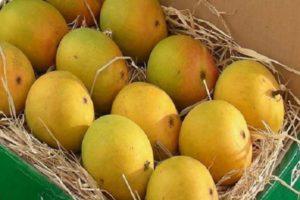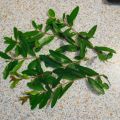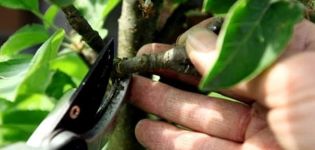How can you grow a pomegranate from a stone and the rules of planting and care at home
If you want to grow a pomegranate, you must purchase a healthy seedling of this tree. Or, knowing how to grow a pomegranate from a seed, you can grow it yourself. Although this is a southern plant, it has recently begun to be cultivated in more northern regions, as well as in the Middle Strip. However, in order to achieve the expected result, it is necessary to adhere to special growing conditions.
Content
- 1 Benefits of growing pomegranate from seed
- 2 Recommended varieties for outdoor cultivation
- 3 Nuances when planting in different regions
- 4 Home cultivars
- 5 Seed preparation for germination
- 6 Germination dates
- 7 Indoor growing and care technology
- 8 How to plant pomegranate outdoors
- 9 Features of agricultural technology when growing
- 10 How to plant a tree for harvest
- 11 When to expect first flowering and fruiting
- 12 Rules for collecting and storing pomegranate fruits
- 13 Pests and diseases - ways to deal with them
Benefits of growing pomegranate from seed
The cheapest way to grow a pomegranate tree is from a common seed. The grains are dried and poured over with milk. After a day, they are placed in a small container with wet sand. After 2-3 months, small plants grow from the seeds. This method attracts with the fact that the seedling can be grown in an apartment throughout the year.
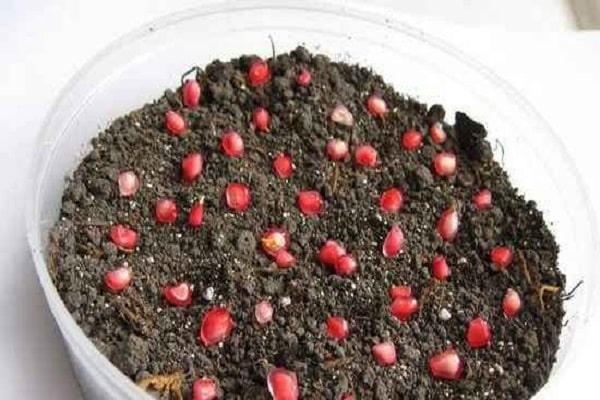
Recommended varieties for outdoor cultivation
Depending on the region in which it is planned to grow pomegranates, a variety is selected. It is also necessary to clarify for what purpose the tree will be planted - for eating fruits, making juices and wine, or for decorative purposes.
Guleisha pink
It belongs to the non-sheltering group, adapted for the south of the European continent. Grows in the form of a bush. Height is about 2 meters. Branches are spreading. Fruits ripen in mid-October.
The weight of one fruit is about 230 grams. The shape is slightly oval, and narrowed at the base. Has a light red or pink tint. On the inside, the upper rind is pinkish-creamy. The grains have a pleasant aroma, they are dark cherry, sweet and sour taste.
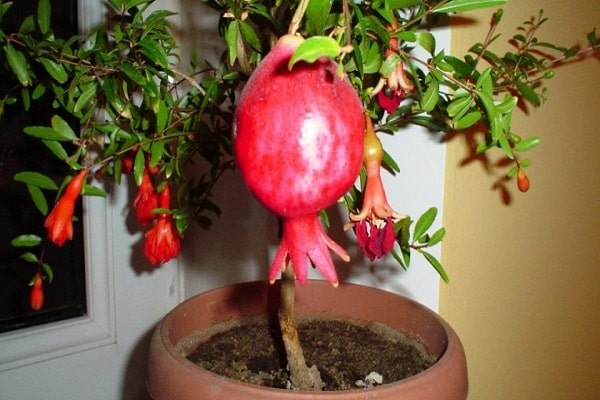
Guleisha red
Until the time of fruiting, this variety grows into a large tree. The shape of the fruit is round. Their outer skin is bright red, and stripes are visible on the top of the fruit.The fruiting neck is rather narrow, with long teeth. The variety has large grains of a rich cherry color. It is used to make juices.
Ak Dona Crimean
The variety easily tolerates low temperatures when creating a shelter. It also grows on closed soils. This is a tall tree, but by pruning it is possible to form a small crown, only 2-3 meters high. The fruits are round. The color of the upper rind is creamy, with a pink tint and a lot of red spots. The grains are red-pink.
Kizil-anor
The variety is widespread in Uzbekistan. Its characteristic positive quality is early maturity. Harvesting begins in early October. Medium-sized fruits. The skin is bright pink, almost scarlet. The grains are deep red. The fruit tastes sweet and sour.

Dwarf pomegranate
This variety can be grown indoors. Fruiting continues throughout the year. It blooms profusely. Fruiting begins already at a plant height of 40 centimeters. Up to 10 fruits ripen on it at the same time. Their diameter is about 5 centimeters.
Nuances when planting in different regions
The pomegranate tree calmly refers to dry periods, as well as short-term drops in temperature up to -17 degrees. Because of this, it is grown mainly in the south. But some gardeners are trying to grow it in the Middle Lane. But, for example, in the Moscow region for this plant it is necessary to build a shelter for wintering. Even if a tree can be grown, the probability that it will bear fruit in such conditions is small, but in the Krasnodar Territory it is quite possible to harvest from such a tree.
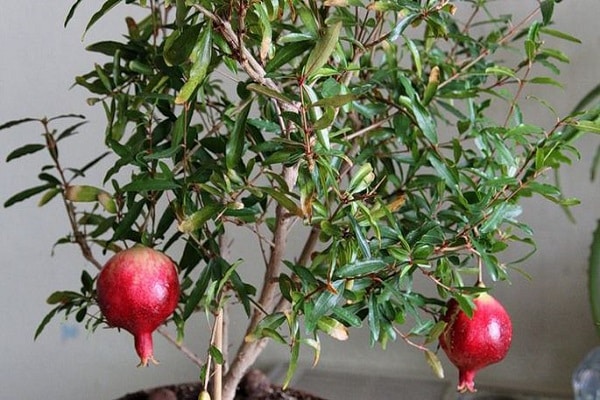
Home cultivars
At home, only dwarf pomegranate trees can be grown:
- Baby variety. The smallest plant of this species. Height is about 50 centimeters. The shape is a bush. It blooms very beautifully. In autumn, the foliage partially falls off. Mandatory pruning is required.
- Variety Dwarf Carthage. It is bred for home cultivation. Its height is 60-70 centimeters. An obligatory care process is the formation of a crown, without this, fruiting is reduced. Has a decorative look. Fruiting occurs once a year.
Seed preparation for germination
The preparatory stage of growing from seeds begins with their collection. The most ripe and beautiful fruit is selected and the grains are separated. Before disembarking, they are washed. Healthy seeds are ivory-colored. For 10 hours, they are immersed in water with epin or zircon to disinfect and activate the growth process. After a day, they are planted in the sand to germinate.
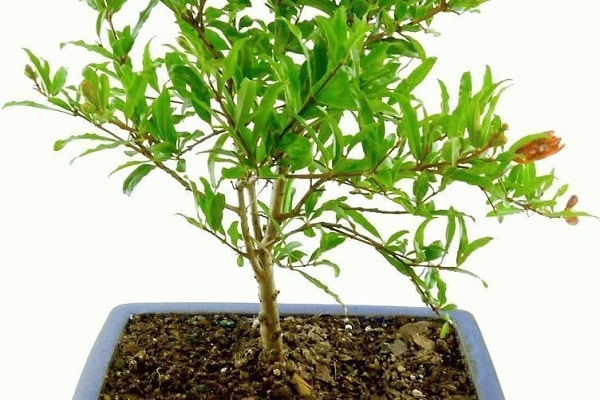
Germination dates
As a rule, the seeds do not lose their appearance after the soaking procedure. They are planted in sand or light soil to a depth of 1 centimeter. After 7 days, the first shoots appear. Seed germination is almost 100 percent.
Indoor growing and care technology
This plant is not demanding for home care conditions. But some manipulations when growing it on the windowsill should be carried out so that a fluffy and fruiting tree grows. As the seedling grows, pinch its top. They do this so that the plant has two main branches.
Required soil composition and pot volume
A universal soil mixture is taken as a soil for planting a pomegranate. You can add sand to it. The soil should be loose, with a pH of 5.5-7.
Before planting, it is disinfected by pouring it with a manganese solution. For planting a seedling, a pot with a volume of about 2-3 liters is taken.
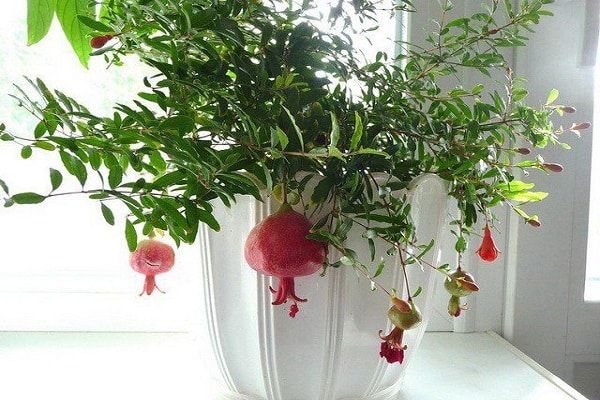
Planting a bone
Pre-prepared bones are planted in a large container filled with light soil. After the emergence of seedlings and the formation of 2-3 leaves, the seedlings dive, planting them in separate pots, but you should not use large containers at once - this will slow down their growth, the plant will use all the effort to form the root system.
Young sprout care
After 2-3 months, the seedlings are planted in separate pots. The transplanted plant is abundantly watered and treated with Kornevin to accelerate engraftment. As the pomegranate grows, it is transplanted into a large container. A five-year-old plant is transplanted into a pot with a volume of 10-20 liters.
During the growth period, he should ensure:
- irrigation regime;
- lighting;
- fertilization;
- preventive measures against diseases and pests.

Crown pruning
During the growth period at home, the pomegranate must be provided with sufficient lighting. Without observing this rule, the branches begin to stretch strongly, and new shoots are not formed. In order for the plant to grow new branches, the pot is taken out into a room with a temperature of 10 degrees.
By pruning, the crown is formed to make the tree look beautiful and well-groomed.
What to fertilize and how often to water
Watering on hot days is carried out 2 times a week. Water is taken at room temperature. When growing a pomegranate in a pot, it must be fed. It is carried out from the spring months until the end of autumn. Mineral and organic fertilizers are used. Fertilizers based on humates are also used.
We organize a rest period
The plant, during dormancy, partially or completely sheds foliage. If the dormant period has not come during the winter months, then it continues to be fed. Watering in winter is reduced to 1 time per week.
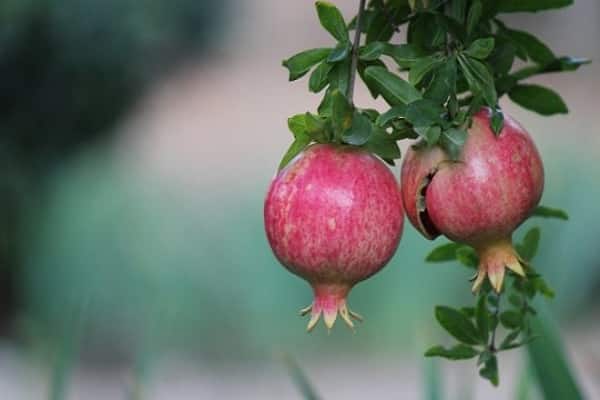
How to plant pomegranate outdoors
You can grow pomegranates in the country. In this case, it is necessary to fulfill some requirements.
Seat selection
A place in the garden is selected for planting, from the southwest side, in order to provide maximum illumination, without strong wind currents.
Optimal timing and landing pattern
It should be planted in the ground in several stages:
- dig a hole 60x70;
- humus, sand, compost are laid on the bottom of the pit, and a layer of soil on top;
- the seedling is lowered into the hole at an angle of 45 degrees;
- the roots are tamped from above with soil so that there is no emptiness;
- put a peg next to the seedling for support.
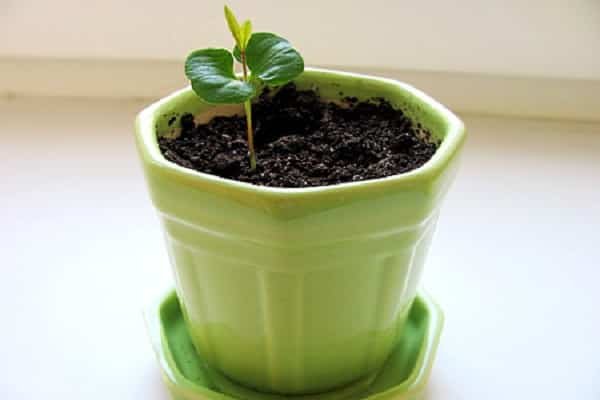
Requirements for soil and temperature
Soils with high groundwater flow are not recommended. Alkaline soil with sufficient drainage is considered optimal. The main requirement is not to overcool the plant. If the temperature starts to drop to -10 degrees, then a special shelter is built.
Lighting
Pomegranate is a light-loving plant. Therefore, provide maximum sunlight exposure. For the same purpose, its crown is thinned out.
Features of agricultural technology when growing
It is difficult for gardeners in non-southern regions to imagine how to care for a pomegranate tree in their garden.
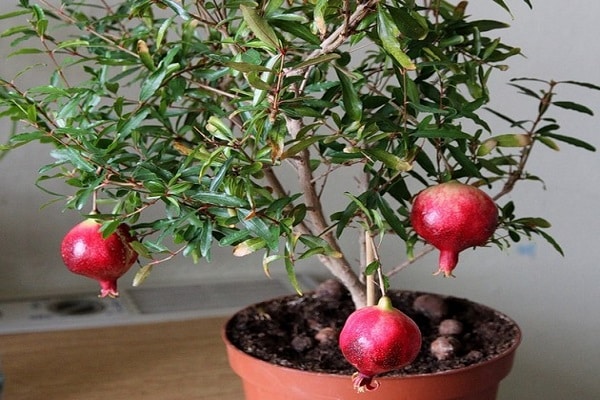
Irrigation regularity
This plant does not require abundant watering; make sure that no stagnation of moisture is formed in the soil. Excess moisture causes the flowers to crumble.
Foliar and root feeding
Feeding in the open field is carried out even before planting the seedling. But if the tree has withered, then the adult plant is fed. At the same time, nitrogen, phosphorus and potash fertilizers are used. In autumn, rotted manure is scattered near the tree.
Loosening the soil
The frequency of watering can be reduced by periodically loosening the soil in order to slow down the process of moisture evaporation.
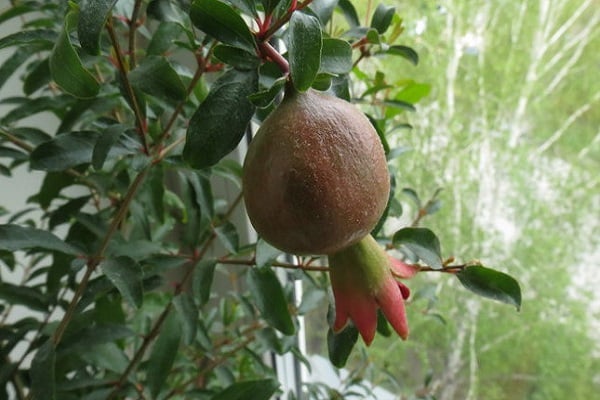
Formation
The formation of the crown must be done not only for the purpose of giving a decorative look, but also for successful growth and development. This procedure is carried out in early spring or after the foliage falls in the fall. Dry branches are removed, root shoots are cut off. In addition, old branches should be properly pruned every 20-25 years to rejuvenate the pomegranate.
Preparing for the winter period
In order for the pomegranate to calmly endure the winter cold, the near-root zone is insulated with a thick layer of soil.If the bush is not tall, it is bent to the soil and also covered with earth or covered with other insulation in the form of plywood sheets, car tires.
How to plant a tree for harvest
For grafting, you need a high-quality cutting. It is grafted onto a seedling with a diameter of about a finger thick. A stalk cut at an acute angle is inserted into the T-shaped incision in the bark. Its cut is completely immersed under the bark. After a month, the stalk will take root, and the bandage can be removed. This home-grown pomegranate will bear fruit well.
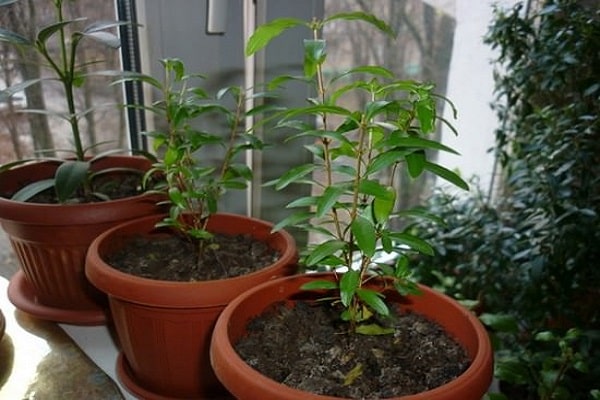
When to expect first flowering and fruiting
The first flowering and fruiting of pomegranates begins at the age of 3 years. But industrial fruiting is achieved by 7-8 years. Such trees will delight with fruits for 30-40 years.
Rules for collecting and storing pomegranate fruits
In the southern regions, pomegranates can begin to ripen in late September. Ripe fruits and those that still need to ripen are removed. But the quality of the immature is not too high. Cut off the fruit with a pruner.
Only undamaged grenades are taken for storage. Store in a room with a humidity of 80-85% and a temperature of +1, +2 degrees.
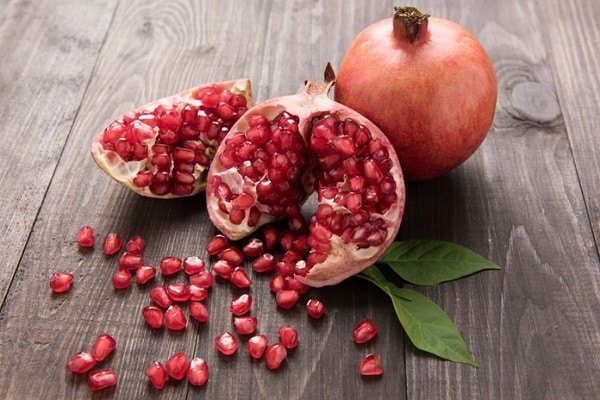
Pests and diseases - ways to deal with them
Diseases of the pomegranate tree can completely destroy it, so you should be careful about the following problems:
- Pomegranate moth. She eats the inside of the fruit. The way to get rid of it is the timely harvesting of the affected fruits, followed by their destruction.
- Pomegranate aphid. She appears on young foliage. Remove with pesticides.
- Cancer of branches. Mostly weakened plants with cracked bark are affected. In this case, swellings are formed near the wounds. The fight against this disease lies in the timely removal of infected branches.

